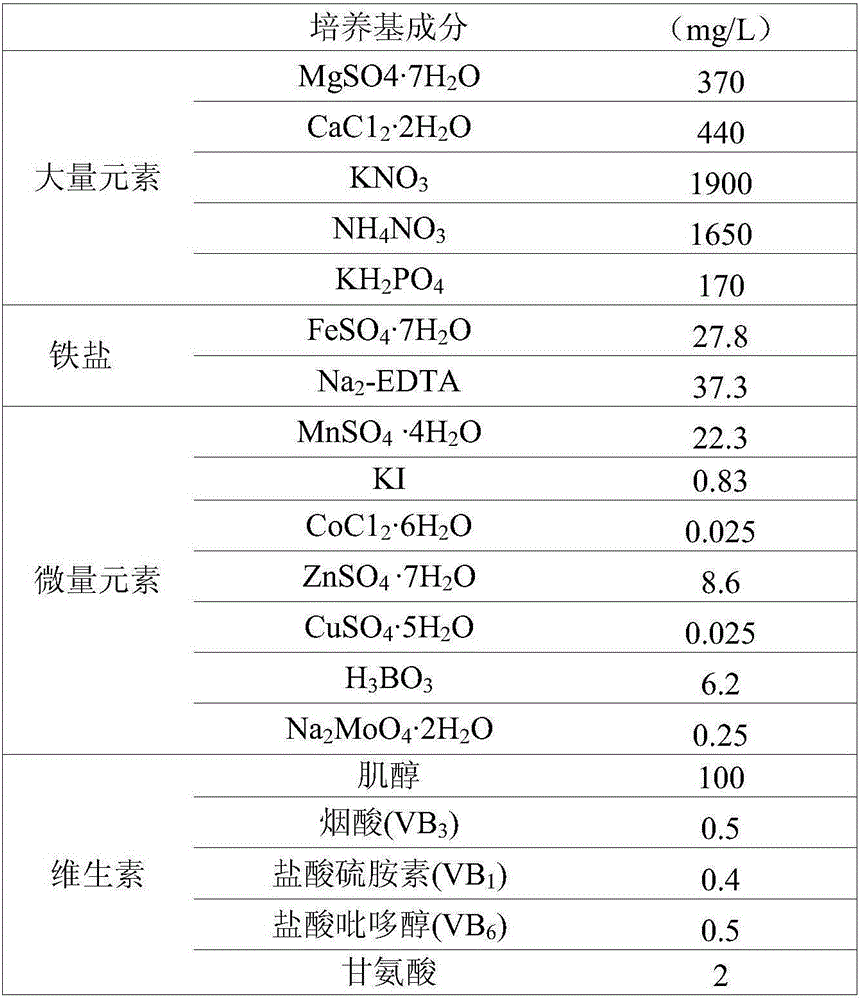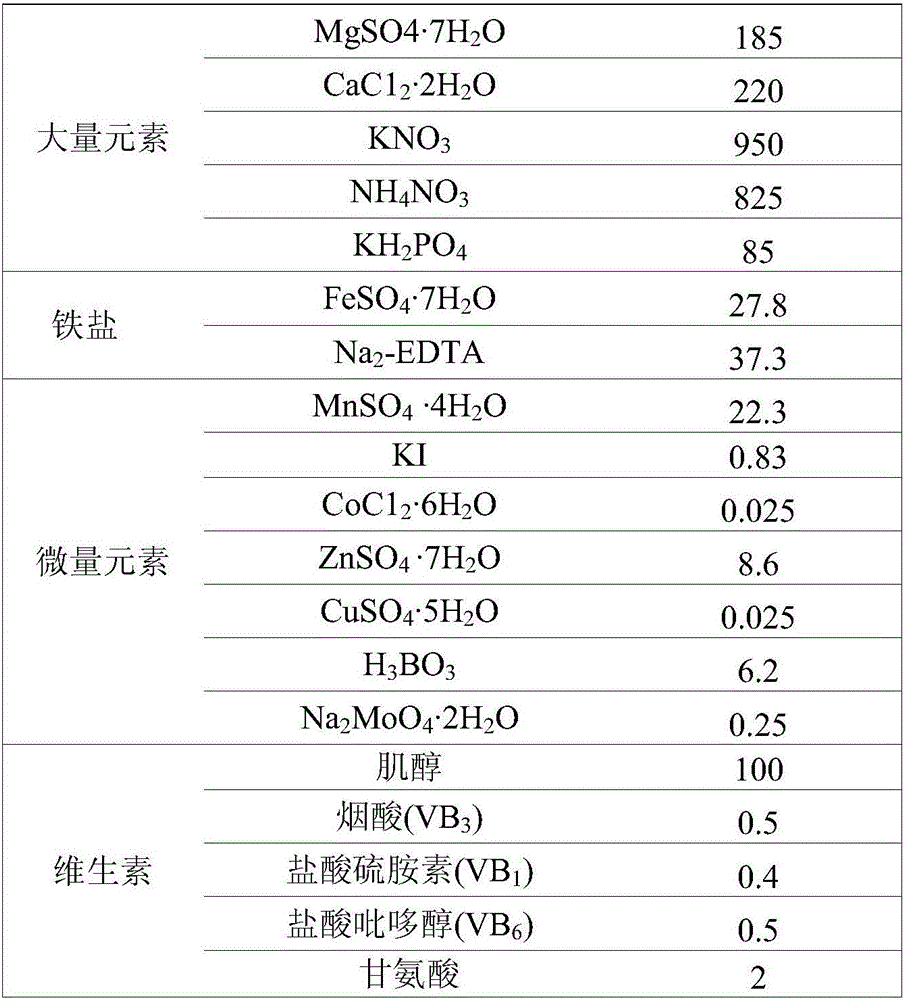In-vitro rapid propagation method for haworthia cooperi v. truncata
A fast, in vitro technology, applied in Ji Yulu's field of in vitro rapid propagation, can solve the problems of expensive plants, large impact on the natural environment, long cycle, etc., and achieve the effect of improving the reproduction efficiency and the method is simple and easy to implement
- Summary
- Abstract
- Description
- Claims
- Application Information
AI Technical Summary
Problems solved by technology
Method used
Image
Examples
Embodiment 1
[0014] When the present invention is concretely implemented, comprise the following steps:
[0015] 1) Sterilize the surface of explants: use the leaves of Ji Yulu as explants, dissolve 0.05g of soap in 150ml of tap water to make soapy water, then soak the leaves of Ji Yulu in soapy water for 15 minutes, and put them under running water Rinse for 2 hours, put the rinsed leaves of Ji Yulu on the sterile operating table, disinfect the surface with alcohol with a volume concentration of 75% for 30 seconds, and then use HgCl with a mass concentration of 0.1% 2 Surface disinfection for 7 minutes, and finally rinse with sterile water 5 times;
[0016] 2) Induction of callus: cut the surface-sterilized leaf explants into 0.3 cm on a sterile operating table 2 Put the small pieces of the explants into the high-pressure sterilized medium, each bottle of medium is 50ml, put 5 pieces of explants in each bottle, and carry out the cultivation under the temperature of 23 ℃, the light intens...
Embodiment 2
[0022] When the present invention is concretely implemented, comprise the following steps:
[0023] 1) Sterilize the surface of explants: use the leaves of Ji Yulu as explants, dissolve 0.08g of soap in 180ml of tap water to make soapy water, then soak the leaves of Ji Yulu in soapy water for 15 minutes, and put them under running water Rinse for 2 hours, put the rinsed leaves of Ji Yulu on the sterile operating table, disinfect the surface with alcohol with a volume concentration of 75% for 30 seconds, and then use HgCl with a mass concentration of 0.1% 2 Surface disinfection for 7 minutes, and finally rinsed with sterile water 6 times;
[0024] 2) Induction of callus: the surface sterilized leaf explants were cut into 0.4 cm on a sterile operating table 2 Put the small pieces of the explants into the high-pressure sterilized medium, each bottle of medium is 50ml, put 5 pieces of explants in each bottle, and carry out in the cultivation room temperature 25 ℃, light intensity...
Embodiment 3
[0030] When the present invention is concretely implemented, comprise the following steps:
[0031] 1) Sterilize the surface of explants: use the leaves of Ji Yulu as explants, dissolve 0.1g of soap in 200ml of tap water to make soapy water, then soak the leaves of Ji Yulu in soapy water for 15 minutes, and put them under running water Rinse for 2 hours, put the rinsed leaves of Ji Yulu on the sterile operating table, disinfect the surface with alcohol with a volume concentration of 75% for 30 seconds, and then use HgCl with a mass concentration of 0.1% 2 Surface disinfection for 7 minutes, and finally rinsed with sterile water for 7 times;
[0032] 2) Induction of callus: the surface sterilized leaf explants were cut into 0.6 cm on a sterile operating table 2 Put the small pieces of the explants into the high-pressure sterilized medium, each bottle of medium is 50ml, put 5 pieces of explants in each bottle, and carry out the cultivation under the temperature of 27°C, the lig...
PUM
 Login to View More
Login to View More Abstract
Description
Claims
Application Information
 Login to View More
Login to View More - R&D
- Intellectual Property
- Life Sciences
- Materials
- Tech Scout
- Unparalleled Data Quality
- Higher Quality Content
- 60% Fewer Hallucinations
Browse by: Latest US Patents, China's latest patents, Technical Efficacy Thesaurus, Application Domain, Technology Topic, Popular Technical Reports.
© 2025 PatSnap. All rights reserved.Legal|Privacy policy|Modern Slavery Act Transparency Statement|Sitemap|About US| Contact US: help@patsnap.com



